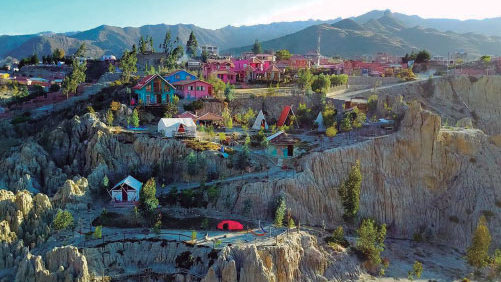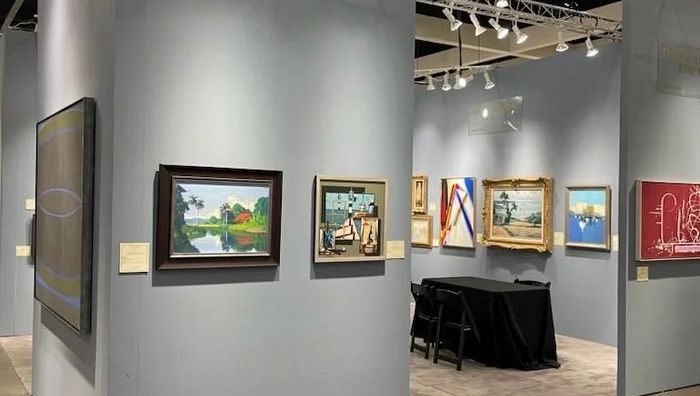Where a Comprehensive Model Evolves
The Esthetics x Genetics exhibition (23 y 12 Art Center, 2007) by Matanzas-born artist Nadalito showcased a coherent process of interrelations among different aspects of the artist’s career. The main theme –consumption– puts the issue of design and its integration within the arts as the fundamental topic to be developed. It was a proposal articulated from the practical effects of the museographic and/or publicity design in which museography and the work make up a unit not only limited to the –equally conceptual– exercise: “museography is the work / the work is museography,” but also to functions that link art and design to basic issues of socialization and communication.
Nadalito mended the commercial cookie-cutter esthetics, that of department stores and fashion design through a recycling of codes and references both in the public sector (art and design; art and visual culture) and the individual or
personal mind frames (spiritual and material). Seen from a Cuban context, this is the project that has best established equivalences in terms of the commercial and publicity matrix as a model for the organization of –still paradoxically our– contemporary art and culture, as well as everything related to the idea of showing consumerist esthetics and mentality as parts of the new and widespread order of social relationships.
What might appear to be a snob stance since it’s portraying itself as evidence of an allegedly off-limits corporate and telematic reality, is brought up and taken on to its biggest consequences by someone who lives and works in the travel destination of Varadero, a place from where consumerist practices and realities have become major ingredients of our daily life and that are no stranger to residents in the nation’s capital. Extrapolating that experience to the Havana art gallery on 23 Ave. and 12th Street, right on the corner of the name-like commercial center, turned this proposal into an act of psychological and esthetic provocation. The objective and the sentiment of consumerism as a pattern of seduction turn publicity into an unjust mechanism in the sense that it is presented to us as something natural and nearly genetic. Nadalito tautens and controls those antagonism levels with by adding coatings, like patinas, texts and scratches
that unite photographic surfaces and planes opposite to reality. In the same breath, the gallery enhanced its space and grabbed more public, not only by expressing itself from the glass windows, but also because it reeled in spectators who were candidly interested in the shoe sale discounts being announced, the kind of currency they could pay for those items, or in the best-case scenario, in new price tags on the artworks that were on sale, quite a summer special offer and a trap the public was supposed to walk away from the critical and many times gapping character that contemporary art triggers time and again.
And that’s how Esthetic x Genetics becomes a steppingstone and source of inspiration to this brief outline about his work since the artist makes an adjustment with himself –a copy from the copy of the copy– whereby he has recycled different moments and images of his work to overlap them all and come up with a symbiosis of messages that make up the contemporary visual environment and the integrated model our prescriptions are ingrained in; a model that combines both creative and critical aspects as it behaves with discipline in the face of the imperatives and the avalanche of codes that publicity provides. As antecedents to these reflections, his My Own History (or Philosophizing with Images) 2003 and Fusion, 2004, broached the dualism between postmodern reality and representation from the perspective of the one who magnifies and questions superposition and the reference chains.
The My Own History (or Philosophizing with Images) series, which is nearly an obsession in the author as he remodels and transforms what we call so far the reason of the doubt, dealt with the House-Workplace-Country-Survival thematic core through analogical images of portrayed actions. But that also marked the start of the use of texts to cover 35 mm negative films (see-through layers added on the negative films with felt-tip pens, oils or vegetable inks, etc.), a resource barely exploited in Cuban photography that has, on the other hand, allowed for an international development both in traditional photography and the use of news means. And it’s quite a paradox if we remember that the pictures of Gory, Marta Maria Perez, Rene Peña and many others have made incursions in the text-image relationship, yet only in Nadal’s the text is part of the original and gets ingrained in the photography’s own procedure. And how important could a before and an after actually be in terms of communication and conceptual markings to be passed on to? What difference do they make? In Nadal, the text used to generate a defragmentation, a rupture or ripping of the image. It was also a photographed or created image as an organic component of the picture. One word was leading to another, thus becoming a basic cell of the transformation process. An overlapped or quoted text splayed on an image works as a complement; a text used as a model for representation of an incorporated concept, featuring incisions, drawings or stains, is also photography.
In Fusion, 2004, the basis of the TV Play project dated in 2009,1 Nadal was then increasingly isolating the image from its contexts in a bid to make sure it was just not a representation of reality, not even one marked by technological, media-oriented representations of that reality on TVs, computers and the like. In this sense, he used to combine digital and analogical techniques to resolve problems that can be worked out in a much simpler way through computer software, but rather an effort to lay bare the counterpoint of clashing realities, like the human body-technology integration. But this is just another way of alluding to the method or the resource of digital technology resolved by means of editing, superposition or juxtaposition of planes and the insertion of the screen-window in the human lives, so transformed into an extension (replacement) of our bodies and –why not?– of our souls. Nadalito was talking about a new cultural man as he was piecing together material, technological and poetic aspects of that new being. I don’t remember either that many Cuban artists who actually focus on such problems.
A Little Less Complicated
However, his State Issues (Revolucion y Cultura, Jan. 2008) project appears to lead us back to those first steps of his in which photographic purism and formal simplicity were the key to the work, while the author’s notion comes back on as something unique and unrepeatable. All this much bears out that Nadal is a photographer of the regarded realities rather than the real. The intellectual game derives here on the unity of the physical landscape and the emotional landscape, construing the latter not as the genre of the traditional pictorial style (even photographic), but an interpretation of those things that can be found around us, in the horizon or just standing around our feet. But even that distance perspective (approach) to the visual field of reference alludes also to a somewhat open, somewhat embracing frame of mind that’s also somewhat present in, focused on or aloof from his reflections. With the sight set on that minimum “landscape” (minimalist) or recreated mental landscape (neo romantic), Nadalito goes back to the text, the pithy issue of his research. The procedure in this case is a cultural operation that intentionally overcomes the way in which his first “coverings” used to question the before and the after of his photography. Craftsmanship and technology, the intellectual and the mechanic melt into each other as a balance of forces among the implications of the digital exercise whereby photography no longer endures the film-developing process –definitely well constructed in the past. In State Issues he alludes to an isolated fragment of reality ingrained in the concept or idea that oozes out of the text-image relationship as a printout of the very inspiration act that precedes creation.
Like in the rest of his work, he speaks of his fears, doubts, imbalances, mistakes, memories, etc., but no longer from the complexity of the code, but, on the contrary, as someone who returns to the pristine status of mankind in search of any salvation resource, a certain solution. In this same direction he’s pointed his unedited project entitled Confidence Networks (work in progress, 2007-2009), zeroing in on the quest for human essentiality: a humanity (you’ll excuse the repetition) that could bind us together regardless of our differences –individual, material, local– not just to give us back what we have in common, even from a phony homologation of global realities, but from a consensus that leans to humbleness of some men for others, of some realities in the face of others, or of man in the face of insecurity and despair. Through Confidence Networks, Nadalito portrays and exposes a personal mesh of friends, relatives and colleagues, that same network that has breathed life into both his life and his career. He underscores universes and individual contexts that cross one another from certain social models of collectivity and from which, on the basis of that ductile gesture of holding a pair of shoes in the hands –before the shoe thrown to Bush– all differences are endorsed.
…And even less an elitist
There’s a group of Nadalito’s works that could serve to reveal that sort of enchantment that ties us up around the increasingly standardized and consequently less elitist digital image. The point is the artist barely won full-fledge acceptance and recognition in the photographic guild. First of all, he had “mistakenly” put his smart money on color. It can be said that he set up –from the not-so-far-away Matanzas– a color tradition in Cuban photography that shrewdly propped on conventionalisms and small-fry resources even for the contemporary demands of artistic photography. His work entitled The Basket (1994), that reached the final round during the 1999 National Photography Hall of Cuba’s National Photographic Library, was an analogical sequence shot with color film that depicted three snapshots of the sun approaching and entering through a basketball loop. A work built from the principle of a snapshot that, according to the opinions of many, if it would have been taken in black and white the shot would have acquired a more serious and remarkable tone.
A Day of Ofelia, 1999, one of the first –and best– photographic essays in full color I’ve ever seen, turned eight daily actions performed by her aunt Ofelia (sewing, cleaning, washing, hanging clothes, ironing…) and her life space into a studio for a different esthetics of what daily beauty is all about; an esthetics that virtually brought us back to the studio or more conventional kind of photography in order to legitimize the space and the most popular household life. Nadalito was presenting Ofelia with the kind of dignity that before of how her life was actually like before his very eyes, conveying a feeling of respect and consideration. But he was not just making do with a perfect framing and a good-looking image; the need to renovate oneself and be useful led him down two convergent ways in terms of the composition: the design and the photograph. And it’s not random at all if we bear in mind that the camera as a technological artifact offers unlimited composition possibilities, while design also gives plenty of wiggle room to the composition.
The road Nadal walked down in this stage led him very quickly to experimentations that claimed for something other than the encounter between the photographer, the reality and the camera; a new procedure that would later on claim its nonstop need for experimentation, the kind of experimentation that spun off Erotic Games or Erotic Story, 2001.2 In this work, the color’s crossover planes, the composition, the forms, the lines or the volumes appeared digitally built. To our surprise, it was a digital snapshot taken with a low-resolution camera that could produce a “pictorial deceit” effect, good for taking nearly secret pictures and that eventually prompted the name office eroticism as a reference to the daily erotic rituality in which subversion becomes subtleness and secrecy, thus breaking free from the “authorized” guidelines.
What has formerly been a basic aspect for him in the past (color), for others it was just a drawback. With today’s digital art and technology, nobody dares to question its use. But back then Cuban galleries used to look askance at it. When tracing the origins of color, we ran into the photographs “lit up” by Gory in the darkroom, Fors’ experiments to turn his images into sepia and Arturo Cuenca’s shots, a trio from the 1980s, and more recently the images taken by Yamila Lomba when she used to alter the development of slides and used to print the pictures with her own color variants. Just a two or three other isolated instance in this field of photography can be mentioned: underwater photography that had begun to have its own bevy of both professionals and fans in Cuba3, a prize from the Revolución y Cultura magazine4 and the work conducted by Casa de las Americas with its Photographic Essay Award. All of the above happened before digital technology’s big boom. Even though these artists made use of color as an element that had been brought up or added under certain circumstances, for Nadal photography was color. His entire work is made with color films and with his own technological principles.
I’m referring to the year 1987 when this artist had managed to understand that photography was far more than family pictures taken at weddings and birthday parties, or just as a way to earn money by pleasing others. He also saw a technological procedure that gave him the possibility of experimenting and expressing himself. At the same time, his self-taught studies on techniques and composition helped him find a way of expression in which, always from the principle of color, he switched from the reality-depicting image to the creation of his own compositions by using the fertile terrain of the human body and its sexuality. Those essays were culled later on under the title Color Nakedness, 2001-2002, in which the game of representation is equivalent to the skillfulness and beauty of deploying the human body and its sexuality. In the Fantasy series, 2001, he recreated the idea of the voyeur who attempts to find out what’s behind some zigzagging lines, corporal suggestions and movements equivalent to the dance of the genres. And far more than just suggesting, he pried open a thematic crack in the genre and sex representations by realizing photographically the male fantasy of watching two women having sex. On the other hand, his The Looker installation (Cuba’s Photographic Library, 2002), put the spectator in the quasi-traditional perspective of those characters who, under the Terry Bridge in the city of Matanzas, keep looking up just imagining what they cannot see.
My Own History (or Philosophizing with Images), 2003, Fusion, 2004; Esthetics x Genetics, 2006-2007; State Issues, 2008; Confidence Networks, 2007-2009; The Reason of Doubt, 2009 and TV Play, 2009, among others mentioned above, are projects that put Nadalito within the boundaries of Cuba’s most experimental art, with schemes and images that move far beyond photography –either analogical or digital– and stand as sensitive and re-dimensioned equivalents of our own lives.
Havana, 2008-2009
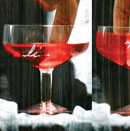


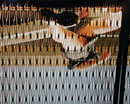
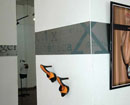
Related Publications
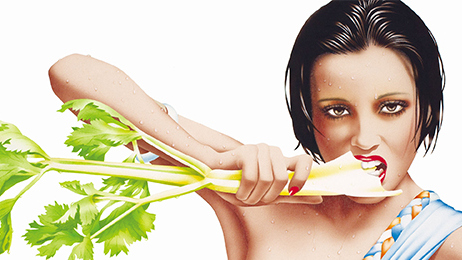
How Harumi Yamaguchi invented the modern woman in Japan
March 16, 2022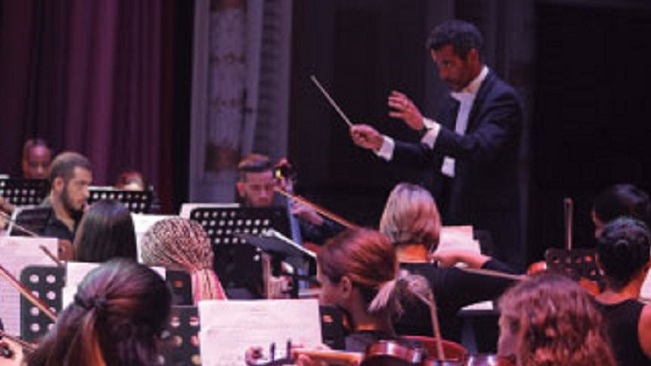
Giovanni Duarte and an orchestra capable of everything
August 26, 2020